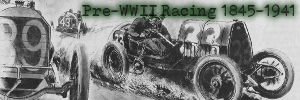















LESSONS FOR AUTOISTS FROM GLIDDEN TOUR |
|---|
 Topics: Glidden Tour
Topics: Glidden Tour
|
The New York Times
August 5, 1906
Beneficial to Manufacturers, Buyers, and A. A. A. Committee
LITTLE TROUBLE IN MOTORS
Tires, Axles, and Springs Gave Greatest Difficulty - Improvements Likely to Follow.
"A school of instruction for the manufacturer more than an object lesson of importance to the buyer," was the way that A. W. Church of the Automobile Club of America summed up the lessons of the recent A. A. A. tour yesterday. "The manufacturers," he continued, "and they were by far the leading entrants in the Glidden Cup, and the members of the A. A. A. Touring Committee all learned something of value. The manufacturers discovered a number of points requiring improvements in future models of cars, while the committee, well, the complaints that have poured in upon them are too numerous to talk about, and I guess the members who tried to do the managing understand the situation as well as anybody."
The fact that thirteen cars finished the Glidden Cup with perfect scores, while a number of other cars completed the long 1,200 mile journey with slight penalties against them, and these due more to mistakes by the occupants or drivers than to actual mechanical troubles, is in itself the strongest possible indorsement of the reliability of American cars. But few foreign cars entered, and most of these were there more for pleasure than for competition, so the entire tour was virtually a test of American machines.
Many of the contestants have called the rules easy. On the other hand, the committee honestly thought them so difficult previous to the run that it was not believed one car would finish with a perfect record.
"Neither Paul Deming, Chairman of the Touring Committee, nor myself," said Secretary Sidney S. Gorham yesterday just before departing for Chicago, "imagines for a moment that a single car could finish the trip without some penalty. In fact, the committee had felt that the award of the Glidden Cup might have to be made to the car having the least penalty points. We have, however, seen that the rules, even with a stiff running schedule between four and five controls each day, were not hard enough. The cars were better than the committee gave them credit for. That's about the size of it, and now we have the problem of making stiffer rules for next year.
"To my mind, the present tour has furnished the grandest exhibition of the serviceability of American cars that has ever been seen in this country. It possesses benefits alike to the industry and to the public. The majority of automobile users are more interested in knowing just what certain types of stock touring cars can do over all sorts of roads than they are in the success of an especially constructed racing machine. To be sure, many of the cars had expert mechanics with them, so if troubles did occur they were remedied much quicker than could be done by the private owner. Still, taking into consideration the fact that every opportunity was used for success, the triumph of American cars is unquestioned, and they stand before the public to-day on a higher plane of excellence than ever before.
"It was no easy road that the cars had to travel. Outside of Buffalo we had a fine road for several miles. Then, through the Mohawk Valley, miserable conditions were met. The worst stretch, I think, was from Montreal to Three Rivers. For miles the road was little more than a sand trail, tall grass growing between the grooves left by big cart wheels. Through Maine, back in the wild woods, the roads were magnificent-better, in fact, than many boulevards. All of these conditions, good, bad, and indifferent, combined to make a very thorough test, and I regret that the pleasure side of the tour was not more pronounced."
Few troubles were experienced with the motors, the improvement in this respect being very marked over similar tours two and three years ago. Tires, axles, and springs gave the greatest trouble. Strengthening and improvements in these parts of the machine will undoubtedly follow. The superiority of the solid axle over the hollow axle for hard road work was proved in many cases. Springs also suffered severely. Most of the manufacturers' cars virtually did away with the convenience of springs by strapping them tightly to the frame, thus obviating the danger of breaking by a sudden rebound, but making the run fearfully rough for the passengers. Many of the tires also were so heavily armored that it was almost impossible to see the rubber shoe. So heavily were many covered with chain and other metallic substances as to practically destroy the resiliency of the pneumatic tire.
The splendid ability of the expert driver was also shown to a high degree. The success of all the thirteen cars depended very largely upon skillful driving, it was a splendid lesson in this respect for amateurs, as they encountered emergencies and road difficulties that might not meet them once a year in ordinary city and suburban use.
